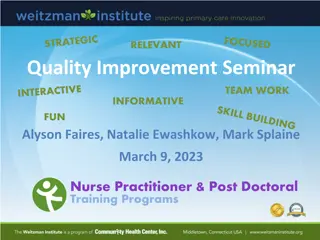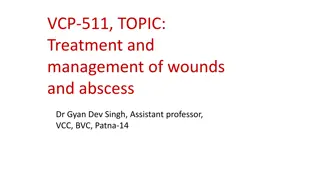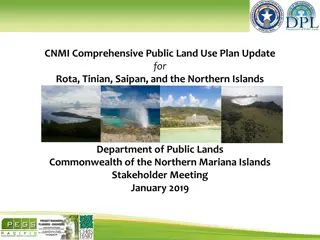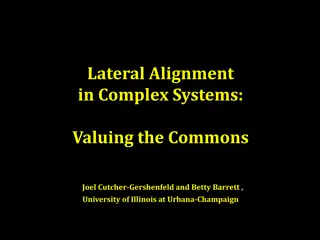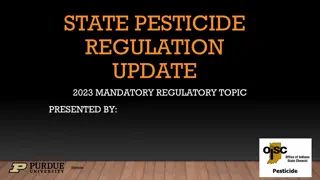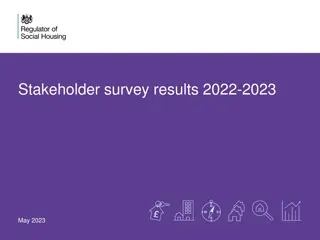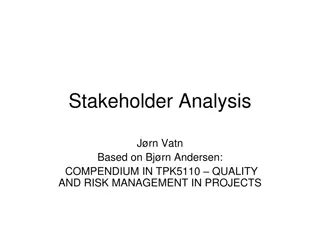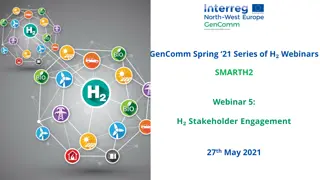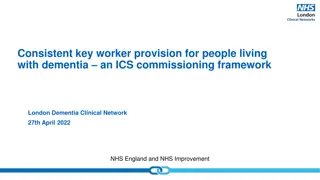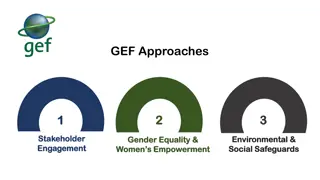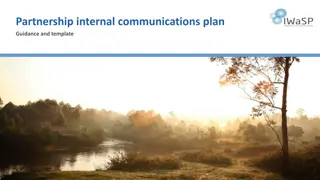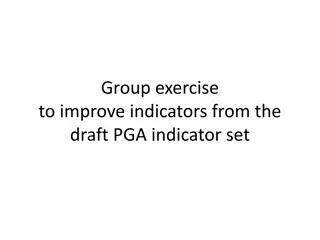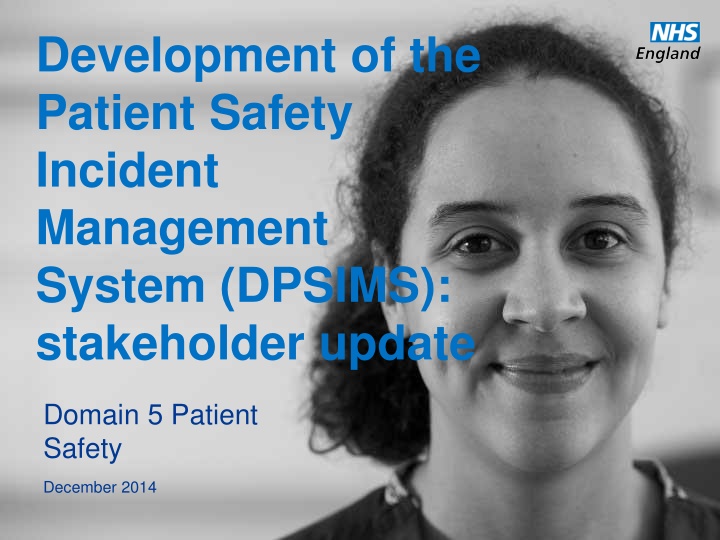
Enhancing Patient Safety: NHS Initiatives and Strategies
Explore the development of the Patient Safety Incident Management System (DPSIMS) in the UK's NHS, focusing on stakeholder updates, strategies, key priorities, and the importance of systems and culture in ensuring patient safety. Learn about the National Reporting and Learning System (NRLS) and identified needs in improving quality and streamlining processes for a safer healthcare environment.
Download Presentation

Please find below an Image/Link to download the presentation.
The content on the website is provided AS IS for your information and personal use only. It may not be sold, licensed, or shared on other websites without obtaining consent from the author. If you encounter any issues during the download, it is possible that the publisher has removed the file from their server.
You are allowed to download the files provided on this website for personal or commercial use, subject to the condition that they are used lawfully. All files are the property of their respective owners.
The content on the website is provided AS IS for your information and personal use only. It may not be sold, licensed, or shared on other websites without obtaining consent from the author.
E N D
Presentation Transcript
Development of the Patient Safety Incident Management System (DPSIMS): stakeholder update Domain 5 Patient Safety December 2014 www.england.nhs.uk
WHY: Patient Safety strategy 2014/15 Statutory Responsibilities Mandate Objectives NHS Outcomes Framework Keogh Review Ambitions Francis Response Berwick Report Gaining a better understanding of what goes wrong in healthcare Enhancing the capability and capacity of the NHS to deliver patient safety improvement Tackling key patient safety priorities Specific work programmes to address: Improving completeness of reporting to the National Reporting and Learning System (NRLS) Developing a new national patient safety incident management system Developing patient safety thermometers Creating the first ever direct national measures of patient safety using retrospective case note review Developing patient safety data pages on NHS Choices Website Establishing the Patient Safety Collaborative programme Deliver programme to identify and recognise Patient Safety Fellows Further developing the investigations capability across the NHS Developing an improvement programme, including change packages, to tackle key clinical patient safety areas and vulnerable groups Establishing Medication Safety and Medical Device Safety Officer Network across England Pressure Ulcers Medication & Devices Error Failure to Monitor children Neonatal admissions Anti-Microbial Resistance Imp Mental health Learning disabilities Deaths and restraint whilst in custody Acute Kidney Injury Nutrition and Hydration Primary Care (Increase GP reporting) Discharge Falls Older People Offender Health Never Events Handover Deterioration Sepsis VTE HCAI www.england.nhs.uk
WHY: systems and culture Patient Safety culture Individual interactions Leadership Practice IT systems Patients Processes LRMS NRLS STEIS Staff Ethos www.england.nhs.uk
WHY: the NRLS today www.england.nhs.uk
WHY: Identified needs Quality Streamlining Culture Other User Experience System Needs Supports just culture in the NHS Builds on international best practice Meets statutory requirement Focuses on learning Single system Easier to use Engages the user in reporting-learning cycle Supports specialty- specific learning Facilitates improvement Reduces duplication Accessible to patients Supports transparency Supports standardisation Interoperable with other systems Supports Patient Safety Culture Produces useful, accessible data Supports functions of other healthcare bodies Supports local learning Provides risk management functionality Supports research agenda Fits current NHS delivery models Supports national learning Improves data quality Improves feedback Supports identification of and reduction in inequalities Works on modern conceptualisations of harm Triangulates data from other sources Aids patient involvement in care Locally customisable Secure, safe, robust Supports better analysis and review Supports helpful analysis Good governance, processes, policy Allows for measurable and narrative reporting Flexible Offers VFM Supports reporting from all healthcare settings Achieves widespread buy-in Utilises cutting-edge technologies Works with agile/remote working practices Surveillance function Future-proof www.england.nhs.uk
WHY: barriers to reporting Fear of negative response from co- workers No faith it will lead to change Fear of impact on reputation Incident unlikely to happen again Incident was not preventable Whose responsibility to report? Workload Definitions of what to report are unclear Cause already clear Not a priority Complex processes Repeat incident, repeat report Fear of punishment Extra admin Interrupts work process Lack of feedback Takes too long Fear of disciplinary action No major patient impact Not confidential www.england.nhs.uk
WHY: facilitators to reporting Rewarded for reporting Value the feedback provided Value Simple processes importance of PS reporting Faith that reporting leads to change Blame-free organisational culture Clear policies and guidelines for reporting Can learn from reporting www.england.nhs.uk
WHAT: The task We need a reporting and learning system that will help improve the ability: of all healthcare-associated organisations to report more effectively (eg non-acute settings, Independent Sector, devolved nations) to develop better learning that supports more improvement to provide greater transparency of patient safety data to reduce risks associated with: duplication and omission lack of standardisation the gap between the capabilities of the NRLS and the needs of the NHS, patients, and other users Therefore, seeking to develop a successor to the NRLS, building on its success and making it fit for the future And considering how best to do this in a context of uncertainty and possible change www.england.nhs.uk
WHAT: the story Investigation Results Patient Story Locally derived learning Live file in STEIS for action/ management Report made to STEIS (within 48hrs) Report extracted for NRLS Clinical Report in LRMS National Clinical Review Record of incident in NRLS Cleansing/ anonym ion Acute Route PSI Most other settings eForm Report Nationally derived learning KEY: Incident Data Document Process Stored data www.england.nhs.uk
Neither the local nor national learning systems are perfect they both meet some requirements, but neither make best use of the other as a supporting resource or channel WHAT: the story The patient story is often lost from the incident, unless they make a complaint - which is then handled through separate systems or if the incident goes to full investigation Other learning frequently is developed, but often sits outside of this system NRLS processes don t fully integrate with culture Investigation Results This separation of live management files and static NRLS records can lead to two versions of the truth Patient Story Locally derived learning Subjective classifications, reports of varying quality/detail Live file in STEIS for action/ management Report made to STEIS (within 48hrs) Only Serious Harm or Death: <1% of reports Report extracted for NRLS Clinical Report in LRMS National Clinical Review Record of incident in NRLS Cleansing/ anonym ion Acute Route PSI Most other settings eForm Report The new Stage 1,2,3, Alerts allow for locally derived learning to be disseminated, but only on issues that make it to national Alert level. Benefit is lost when local learning remains local. Nationally derived learning Loses benefits of more evolved local management systems available to trusts with LRMS Source of poor standardisation, as local arrangements vary Time and resource intensive; frequently sits outside local processes, requiring duplication of effort. Low reporting rates. KEY: This step effectively prevents any non- generic feedback to individuals making reports Incident Data Document Process Stored data www.england.nhs.uk
WHAT: the systems NRLS vs STEIS NRLS STEIS any Patient Safety incident any degree of harm voluntary no deadline to report for learning access by agreement operated by Imperial Trust Any category of Serious Incident Serious Incidents only mandatory must be reported within 48 hrs for management/investigation commissioners have access operated by DH Patient Safety Serious Incidents ( Severe Harm or Death ) www.england.nhs.uk
HOW: the building blocks Data model Data capture Explore & analyse Investigate & manage Share the learning Support functions www.england.nhs.uk
HOW: the possible combinations Explore and analyse Investigate and manage Data model Data capture Share the learning Support functions Summative reports and statistics LRMS batch upload Web accessible analytical tools Incident workflow and management Guidance and training Current dataset National feedback and clinical review Expanded dataset eForms and web interfaces Collaborative workgroups Patient safety alerting system Helpdesk and system support Combined datasets (NRLS & STEIS) Web portal for learning resources LRMS Free-text and data mining Schedule and coordinate tasks Standards and guidelines synchronisation Thematic and qualitative analysis Re-engineered dataset Define lessons and action plans Discover and join ongoing projects Communication toolkits Mobile devices RCA, SEA, causal factors, etc Integration with other info systems Monitor and assure implementation Share local lessons and improvements Risk analysis and safety monitoring Curate and edit resources User generated tagging and coding Clinical and specialist analysis Automated feedback and updates Data sharing agreements Manage risk register User profiles and permissions www.england.nhs.uk
HOW: sample combinations Explore and analyse Investigate and manage Data model Data capture Share the learning Support functions Summative reports and statistics LRMS batch upload Web accessible analytical tools Incident workflow and management Guidance and training Current dataset National feedback and clinical review Expanded dataset eForms and web interfaces Collaborative workgroups Patient safety alerting system Helpdesk and system support Combined datasets (NRLS & STEIS) Web portal for learning resources LRMS Free-text and data mining Schedule and coordinate tasks Standards and guidelines synchronisation Thematic and qualitative analysis Re-engineered dataset Define lessons and action plans Discover and join ongoing projects Communication toolkits Mobile devices RCA, SEA, causal factors, etc Integration with other info systems Monitor and assure implementation Share local lessons and improvements Risk analysis and safety monitoring Curate and edit resources User generated tagging and coding Clinical and specialist analysis Automated feedback and updates Data sharing agreements Manage risk register User profiles and permissions Example 1 Example 2 Example 3 www.england.nhs.uk
WHO: Stakeholders Patient Safety Domain Government Sponsor Management System Professional networks NHS Arms Length NRLS Operational Imperial College Team at Imperial Health service Administrations NHS England International Local Risk Community commiss rs Devolved providers (5) Team Vendors Health Health London Service Service Bodies users NHS Litigation Authority Director of Patient Safety Royal Colleges Domains 1-5 NHS trusts Clinical Commis ing Groups World Health Org. Datix Welsh Assembly Government Day to day operations Lord Ara Darzi Patients CQC Corporate ICT Team Senior Leadership Team GMC Independent sector MHRA Clinical Support Units Patient Safety Regional/ Area Teams System Leaders Medical Protection Society, Medical Defence Union, (and devolved counterparts ) Ulysses Clinical Advice and Guidance Team NICE Centre for Health Policy, Inst. of Global Health Innovation Primary Care Department of Health Scottish Government Short term solutions Monitor, NHS TDA Carers Operations NRLS Oversight Team NHS England Specialised Commis ning Research bodies HEE Vantage Community care Federation of Independent Practitioner Orgs Commis ing Dvlpmnt PHE Comms Domains 1-4 research and develp t teams Other NHS delivery (prisons, local authorities etc) Repres ive orgs and charities Northern Ireland Government Longer-term develp t Other NHS orgs: estates, SHOT, Confed, NHS BSA Tech LATs Others companies Delivery Mgmt NHS Alliance Comms www.england.nhs.uk
WHO: Stakeholder engagement Establishing the basics What is the current situation? Why does it need to change? Who has an interest? Questionnaire Seeking to answer fundamental questions from users What should the core aim of the system be? What s good about what we ve got? What s bad? What else do users want? Over 600 responses from policy makers, users, ALBs, patients and carers Focus Group Bringing together representatives of key stakeholders Validating the questionnaire findings Highlighting key risks and issues from across stakeholder perspectives, agreeing core principles and aims www.england.nhs.uk
WHO:stakeholder engagement The Patient and Carer Perspective A workshop for patients and carers only Identifying their needs and wants from the system Giving them a voice in what is largely considered to be a clinical resource User Workshops Presented through the lens of the stated patient perspective Addressing issues such as risks, barriers, ideals and supportive actions Agreeing user needs in the light of the information gathered to date Identification of requirements for the new system www.england.nhs.uk
WHAT NEXT? If you have any comments or questions about this presentation, please do not hesitate to contact lucie.mussett@nhs.net Any feedback received will be incorporated into the development of the longlist of options, currently underway The options will be assessed against a Five Case Model (strategic, economic, financial, commercial and management) to identify a shortlist Information about this will be made available in due course www.england.nhs.uk



